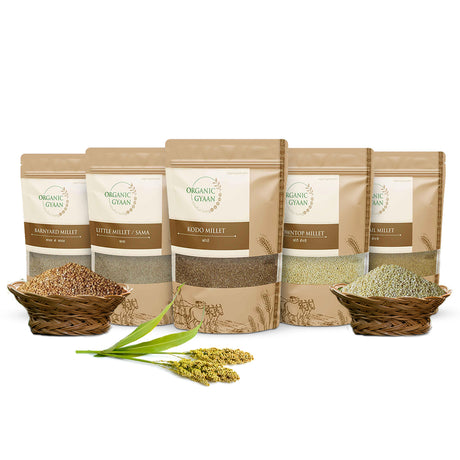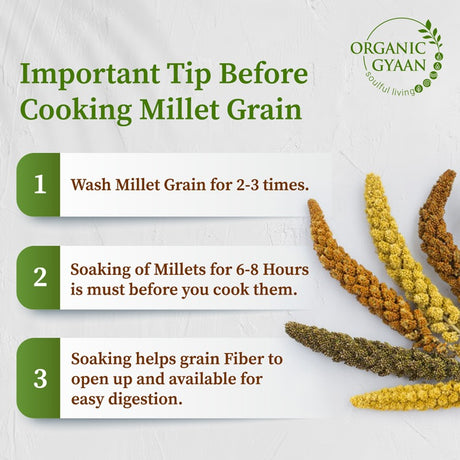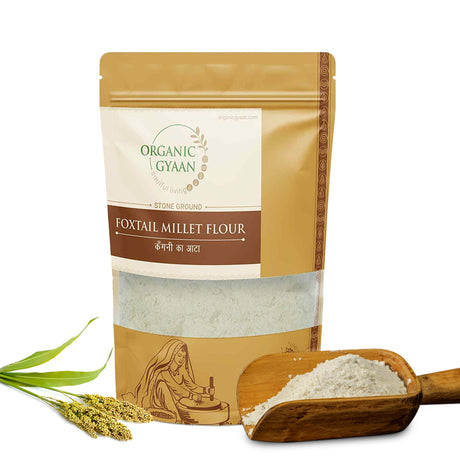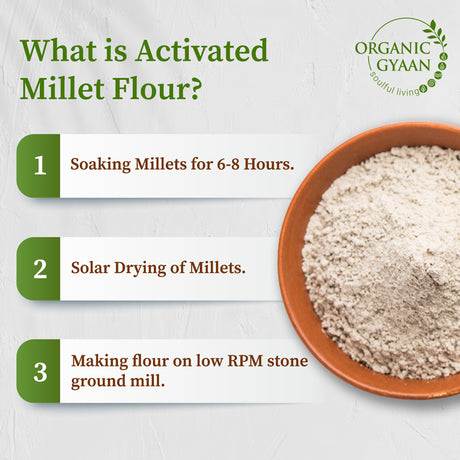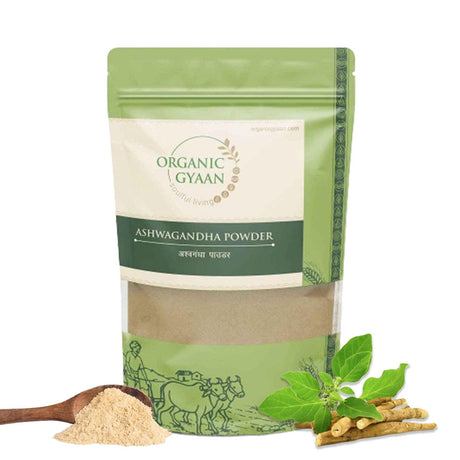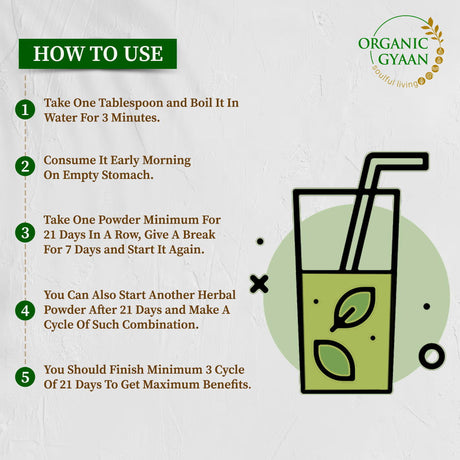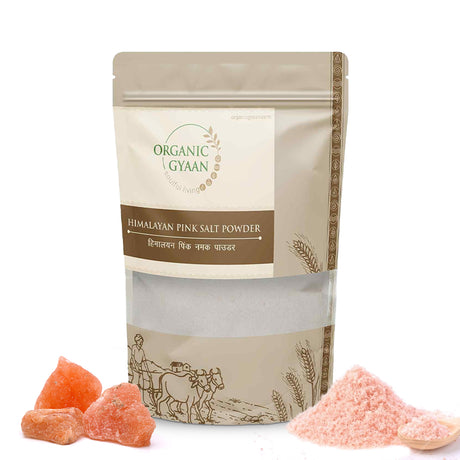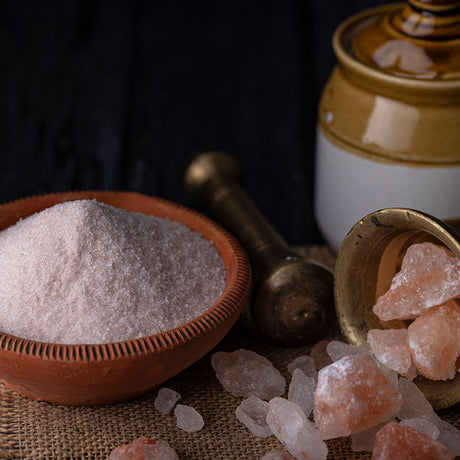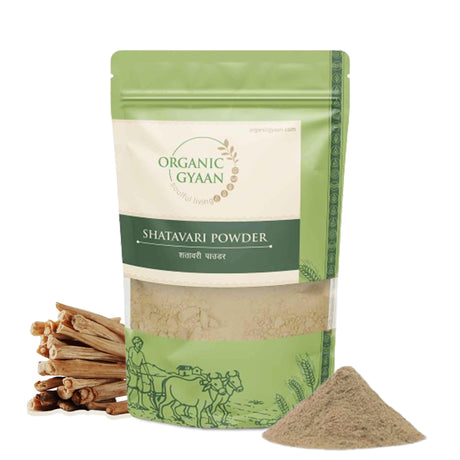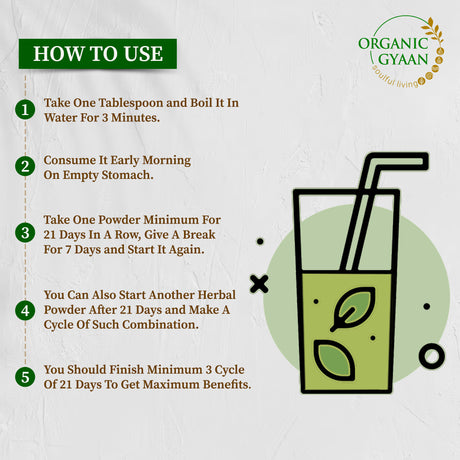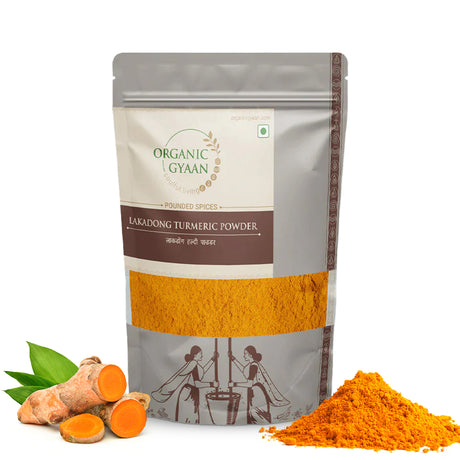तांदूळ हा जागतिक स्तरावर, विशेषतः भारतात, सर्वात महत्वाचा मुख्य अन्नपदार्थांपैकी एक आहे. बिर्याणीपासून ते साध्या भात आणि डाळीपर्यंत असंख्य पदार्थांमध्ये वापरला जाणारा हा एक बहुमुखी धान्य आहे. तांदूळ केवळ उर्जेचा स्रोत नाही तर आवश्यक पोषक तत्वे देखील प्रदान करतो. तथापि, तांदळाचे विविध प्रकार आहेत आणि त्यांच्यातील पौष्टिक फरक समजून घेतल्याने तुम्हाला आहारातील चांगल्या निवडी करण्यास मदत होऊ शकते. या ब्लॉगमध्ये, आम्ही तपकिरी तांदूळ विरुद्ध पांढरा तांदूळ यांची तुलना करू, त्यांची पौष्टिक मूल्ये, फायदे आणि प्रत्येक निरोगी आहारात कसा बसू शकतो याचा शोध घेऊ.
तांदूळ म्हणजे काय आणि त्याचे फायदे?
तांदूळ हे एक धान्य आहे जे जगातील अर्ध्याहून अधिक लोकसंख्येसाठी एक मुख्य अन्न आहे. ते नैसर्गिकरित्या ग्लूटेन-मुक्त आहे आणि आवश्यक कार्बोहायड्रेट्स प्रदान करते, जे शरीराच्या उर्जेचा प्राथमिक स्रोत आहेत. तांदूळात प्रथिने आणि विविध जीवनसत्त्वे आणि खनिजे देखील कमी प्रमाणात असतात. तांदळाचे फायदे हे आहेत:
१. उर्जेचा स्रोत : कार्बोहायड्रेट्समध्ये भरपूर असलेले तांदूळ उर्जेचा एक उत्तम स्रोत आहे.
२. पचनक्रिया सुधारते : यामध्ये फायबर असते (विशेषतः तपकिरी तांदळामध्ये) जे पचनक्रियेत मदत करते.
३. ग्लूटेन-मुक्त : ग्लूटेन असहिष्णुता किंवा सेलिआक रोग असलेल्या लोकांसाठी योग्य.
४. बहुमुखी : चवदार ते गोड अशा विविध पदार्थांमध्ये वापरता येते.
तपकिरी आणि पांढरा तांदूळ यांच्यातील फरक
तपकिरी तांदूळ आणि पांढरे तांदूळ यांच्यातील प्राथमिक फरक त्यांच्या प्रक्रिया आणि पौष्टिकतेमध्ये आहे.
|
वैशिष्ट्य |
तपकिरी तांदूळ |
पांढरा भात |
|
प्रक्रिया करत आहे |
कमीत कमी प्रक्रिया केलेले, कोंडा आणि जंतू टिकवून ठेवते |
अत्यंत प्रक्रिया केलेले, कोंडा आणि जंतू काढून टाकले |
|
पौष्टिक सामग्री |
फायबर, जीवनसत्त्वे आणि खनिजे जास्त |
फायबर, जीवनसत्त्वे आणि खनिजे कमी |
|
ग्लायसेमिक इंडेक्स |
कमी (रक्तातील साखर नियंत्रणासाठी चांगले) |
उच्च |
|
चव आणि पोत |
नटी चव, चघळणारी पोत |
सौम्य चव, मऊ पोत |
|
स्वयंपाक वेळ |
शिजायला जास्त वेळ लागतो. |
लवकर शिजते |
तपकिरी तांदूळ आणि पांढरा तांदूळ यांच्यातील पौष्टिक तुलना
दोन्ही प्रकारच्या भातातील पौष्टिक घटकांवर बारकाईने नजर टाकूया.
|
पोषक घटक |
तपकिरी तांदूळ (प्रति १०० ग्रॅम) |
पांढरा तांदूळ (प्रति १०० ग्रॅम) |
|
कॅलरीज |
१११ |
१३० |
|
कार्बोहायड्रेट्स |
२३ ग्रॅम |
२८ ग्रॅम |
|
फायबर |
१.८ ग्रॅम |
०.४ ग्रॅम |
|
प्रथिने |
२.६ ग्रॅम |
२.४ ग्रॅम |
|
जाड |
०.९ ग्रॅम |
०.३ ग्रॅम |
|
मॅग्नेशियम |
४३ मिग्रॅ |
१२ मिग्रॅ |
|
फॉस्फरस |
८३ मिग्रॅ |
४३ मिग्रॅ |
|
पोटॅशियम |
७९ मिग्रॅ |
३५ मिग्रॅ |
|
थायामिन (B1) |
०.२ मिग्रॅ |
०.०२ मिग्रॅ |
तपकिरी तांदळाचे फायदे
१. उच्च पोषक तत्वांचे प्रमाण
पांढऱ्या तांदळाच्या तुलनेत तपकिरी तांदूळ आवश्यक पोषक तत्वांनी समृद्ध असतो. त्यात फायबर, मॅग्नेशियम, फॉस्फरस आणि पोटॅशियम जास्त असते. हे पोषक तत्व एकूण आरोग्य राखण्यासाठी महत्त्वाचे असतात. उदाहरणार्थ, मॅग्नेशियम स्नायूंच्या कार्यासाठी आणि हाडांच्या आरोग्यासाठी मदत करते, तर फायबर पचनास मदत करते आणि बद्धकोष्ठता टाळण्यास मदत करते. जास्त पोषक तत्वांमुळे तपकिरी तांदूळ रोजच्या वापरासाठी अधिक आरोग्यदायी पर्याय बनतो.
२. कमी ग्लायसेमिक इंडेक्स
तपकिरी तांदळाचा ग्लायसेमिक इंडेक्स (GI) पांढऱ्या तांदळापेक्षा कमी असतो. याचा अर्थ तपकिरी तांदळामुळे रक्तातील साखरेची पातळी हळूहळू वाढते. मधुमेह असलेल्या किंवा रक्तातील साखरेची पातळी नियंत्रित करण्याचा प्रयत्न करणाऱ्या लोकांसाठी हे फायदेशीर आहे. कमी GI रक्तातील साखरेची पातळी स्थिर ठेवण्यास मदत करते, ज्यामुळे इन्सुलिन स्पाइक्स आणि क्रॅश होण्याचा धोका कमी होतो.
३. पचनक्रिया सुधारते
तपकिरी तांदळामध्ये जास्त प्रमाणात फायबर असल्याने पचनक्रिया सुधारते आणि बद्धकोष्ठता टाळण्यास मदत होते. फायबरमुळे मलमध्ये मोठ्या प्रमाणात वाढ होते आणि आतड्यांची नियमित हालचाल होते. फायदेशीर बॅक्टेरियांना अन्न देऊन ते निरोगी आतड्यांतील सूक्ष्मजीवांना देखील समर्थन देते. तपकिरी तांदळाचे नियमित सेवन केल्याने एकूण पचनक्रिया सुधारते आणि सामान्य पचन समस्या टाळता येतात.
४. वजन व्यवस्थापनास समर्थन देते
तपकिरी तांदळात जास्त प्रमाणात फायबर असल्याने, ते तुम्हाला जास्त काळ पोट भरल्यासारखे वाटण्यास मदत करू शकते, जे एकूण कॅलरीजचे सेवन कमी करून वजन व्यवस्थापनात मदत करू शकते. तपकिरी तांदळातील फायबर पचनक्रिया मंदावते, ज्यामुळे भूक नियंत्रित होण्यास मदत होते आणि जास्त खाणे टाळता येते. वजन राखू किंवा कमी करू इच्छिणाऱ्यांसाठी हे विशेषतः फायदेशीर ठरू शकते.
पांढऱ्या तांदळाचे फायदे
१. पचायला सोपे
पांढरा तांदूळ तपकिरी तांदळापेक्षा पचायला सोपा असतो, त्यामुळे पचनाच्या समस्या असलेल्या लोकांसाठी तो एक चांगला पर्याय बनतो. त्यात फायबरचे प्रमाण कमी असल्याने पोटफुगी किंवा गॅस होण्याची शक्यता कमी असते. यामुळे आजारातून बरे होणाऱ्या लोकांसाठी किंवा कमी फायबरयुक्त आहाराची आवश्यकता असलेल्या संवेदनशील पोट असलेल्या लोकांसाठी पांढरा तांदूळ योग्य ठरतो.
२. जलद ऊर्जा स्रोत
पांढरा तांदूळ त्याच्या उच्च कार्बोहायड्रेट सामग्रीमुळे जलद उर्जेचा स्रोत आहे. यामुळे खेळाडूंसाठी किंवा तात्काळ ऊर्जा वाढण्याची आवश्यकता असलेल्या लोकांसाठी ते आदर्श बनते. पांढऱ्या तांदळाचे सहज पचण्याजोगे स्वरूप शरीराला त्याचे ग्लुकोजमध्ये रूपांतर करण्यास अनुमती देते, ज्यामुळे जलद ऊर्जा मिळते.
३. बहुमुखी आणि शिजवण्यास सोपे
पांढऱ्या तांदळाची चव तटस्थ आणि मऊ असते, ज्यामुळे तो एक बहुमुखी घटक बनतो जो विविध पदार्थांसोबत चांगला जातो. तो तपकिरी तांदळापेक्षाही लवकर शिजतो, जो व्यस्त जीवनशैलीसाठी सोयीस्कर असू शकतो. पांढऱ्या तांदळाच्या बहुमुखीपणाचा अर्थ असा आहे की तो साध्या वाफवलेल्या तांदळापासून ते विस्तृत बिर्याणीपर्यंत अनेक पाककृतींमध्ये वापरता येतो.
तपकिरी तांदूळ विरुद्ध पांढरा तांदूळ: कोणता चांगला आहे?
तपकिरी तांदूळ आणि पांढरा तांदूळ या दोन्हींचे स्वतःचे वेगळे फायदे आहेत. तुमच्यासाठी कोणता चांगला असू शकतो हे ठरवण्यास मदत करण्यासाठी येथे एक झटपट तुलना दिली आहे:
|
निकष |
तपकिरी तांदूळ |
पांढरा भात |
|
पोषक घटकांची घनता |
फायबर, जीवनसत्त्वे आणि खनिजे जास्त |
फायबर, जीवनसत्त्वे आणि खनिजे कमी |
|
पचन आराम |
जास्त फायबर सामग्री, पचण्यास जड असू शकते |
पचायला सोपे, संवेदनशील पोटांसाठी योग्य |
|
रक्तातील साखर नियंत्रण |
कमी ग्लायसेमिक इंडेक्स, रक्तातील साखरेचे व्यवस्थापन करण्यासाठी चांगले |
उच्च ग्लायसेमिक इंडेक्स, जलद उर्जेचा स्रोत |
|
वजन व्यवस्थापन |
जास्त फायबर, तुम्हाला जास्त काळ पोटभर ठेवते |
कमी फायबर, तुम्हाला जास्त वेळ पोट भरू देणार नाही. |
|
स्वयंपाक वेळ |
शिजायला जास्त वेळ लागतो. |
जलद शिजते |
|
स्वयंपाकात अष्टपैलुत्व |
नटी चव, चघळणारी पोत |
सौम्य चव, मऊ पोत |
|
आहाराच्या गरजा |
पौष्टिक आहारासाठी योग्य |
कमी फायबर असलेल्या आहारासाठी योग्य |
तुमच्या आहारात तपकिरी आणि पांढरा तांदूळ समाविष्ट करण्यासाठी टिप्स
१. तुमचा आहार संतुलित करा : दोन्ही प्रकारचे तांदूळ तुमच्या आहारात समाविष्ट करा जेणेकरून प्रत्येकाचे फायदे मिळतील. ज्या जेवणात तुम्हाला जास्त फायबर आणि पोषक तत्वे हवी आहेत तिथे तपकिरी तांदूळ वापरा आणि ज्या जेवणात सहज पचन आवश्यक आहे तिथे पांढरा तांदूळ वापरा.
२. तांदूळ मिसळणे : तपकिरी आणि पांढरे तांदूळ एकाच डिशमध्ये एकत्र करून दोन्हीचे फायदे मिळवा. यामुळे तुम्हाला हळूहळू तपकिरी तांदळाची चव आणि पोत अंगवळणी पडण्यास मदत होऊ शकते.
३. निरोगी स्वयंपाक पद्धती : संतुलित जेवण बनवण्यासाठी भाज्या, पातळ प्रथिने आणि निरोगी चरबी वापरून भात शिजवा. भात तळणे किंवा जास्त तेल आणि बटर घालणे टाळा.
४. आहाराचे नियंत्रण : आहाराच्या आकाराकडे लक्ष द्या. संतुलित आहारात इतर अन्न गटांसह योग्य प्रमाणात भाताचा समावेश असतो.
निष्कर्ष
तपकिरी तांदूळ आणि पांढरा तांदूळ या दोन्हींचे स्वतःचे वेगळे फायदे आहेत. सर्वोत्तम निवड तुमच्या वैयक्तिक आरोग्य ध्येयांवर आणि आहाराच्या गरजांवर अवलंबून असते. तपकिरी तांदूळ अधिक पोषक आणि आरोग्य फायदे देतो, विशेषतः रक्तातील साखरेची पातळी नियंत्रित करणाऱ्या आणि पौष्टिक आहार घेणाऱ्यांसाठी. सहज पचण्यायोग्यता आणि जलद ऊर्जा मुक्तता असलेले पांढरे तांदूळ विशिष्ट पचन गरजा असलेल्यांसाठी आणि जलद जेवणासाठी योग्य आहे.
तुमच्या आरोग्याच्या गरजांनुसार तुमच्या आहारात तपकिरी तांदूळ आणि पांढरा तांदूळ दोन्ही समाविष्ट करा. वेगवेगळ्या पाककृती वापरून पहा आणि तुमच्यासाठी योग्य संतुलन शोधा.


